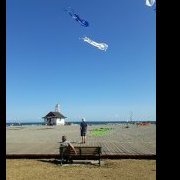Bottled Water. Is It Safe?
-
Recently Browsing 0 members
- No registered users viewing this page.
-
Topics
-
-
Popular Contributors
-
-
Latest posts...
-
0
Crime Dowry Rental Business Owner Defrauded of 5 Million Baht in Investment Scam
Picture courtesy of Workpoint. A 30-year-old businesswoman who runs a dowry rental service has filed a police complaint after being allegedly defrauded of 5 million baht in a scam involving a fake investment pitch to a so-called “capital investor.” The suspect reportedly paid a rental fee of 200,000 baht but then used the full sum to repay personal debts rather than for its stated purpose. Ms. Teerayada, the complainant, lodged the case at Sriracha Police Station, accusing 35-year-old Ms. Porntip of embezzlement after she allegedly misused funds intended for an investment demonstration. The incident has sparked public attention due to its unusual nature and the involvement of a dowry-related financial service. According to investigators, on 12 July, Ms. Porntip approached Ms. Teerayada’s business with a request to “rent” 5 million baht, claiming it was to present to a potential investor as proof of liquidity in order to secure a major business partnership. The agreement was finalised with a scheduled money handover on 16 July and the suspect paid a rental fee of 205,000 baht upfront. However, after receiving the 5 million baht, Ms. Porntip reportedly diverted the entire sum to repay a debt owed to a man named Mr. Amphol, an agent claiming to represent another individual, Mr. Pratipol, allegedly the investor in question. The transaction took place inside Sriracha Police Station, with the suspect asserting that a senior police officer witnessed the handover. Mr. Phattharawatseth, the victim’s partner and co-owner of the dowry rental business, expressed frustration and suspicion over the suspect’s behaviour. “She returned from the police station without the money and simply said the investor had taken it. That’s when we realised we’d been scammed.” In her defence, Ms. Porntip gave inconsistent statements during questioning, at one point claiming she was also deceived and had no intention of committing fraud. However, police determined that there were grounds to detain her on charges of embezzlement. Authorities are currently seeking to clarify the role, if any, of the so-called investor and the police officer allegedly present during the incident. The investigation is ongoing, with police gathering further evidence and questioning all parties involved. Legal proceedings will follow once the facts are fully established. Adapted by Asean Now from Workpoint 2025-07-17 -
-
0
KPlus is now almost useless to me after 4 years without issues they impose this on me
Can no longer transfer more than 50k thb per day anymore, all I ever used the account was for getting money from Europe, twice a month on average with out issue to pay the wife and bills. This is despite me using a correct simcard and already did facial scan at the bank a while back. Probably gonna take a few days to move funds out gonna switch banks. This is utterly ridiculous. -
532
Do you know your wife/girlfriends body count?
Can you possibly reply on one post in this forum without assuming? That does show insecurity and jealousy, maybe because you failed at your 5 relationships? Read without skimming, so you can see where I've said many times a relationship ending doesn't mean a failure, but a release for both to find a more suitable match. Try and understand this, so you don't repeat it again and again. Don't assume what you think I don't understand, nor anything else about anyone here, because again, you don't know anyone here personally.- 1
-

-
3
Visa options for 4-5 month snowbird stay for winter 2025-2026
I used to just get a “retirement visa“ for just this purpose. A bit of paperwork each year to keep it active and bob's your uncle. You do need the extra 800k to leave in the Thai bank though. Now I've gone to a DTV which works even better. -
14
UK Secret Afghan Evacuation Exposed After 23-Month Gag Order Lifted
Guess we will never know.
-
-
Popular in The Pub






.thumb.jpeg.d2d19a66404642fd9ff62d6262fd153e.jpeg)








Recommended Posts
Create an account or sign in to comment
You need to be a member in order to leave a comment
Create an account
Sign up for a new account in our community. It's easy!
Register a new accountSign in
Already have an account? Sign in here.
Sign In Now